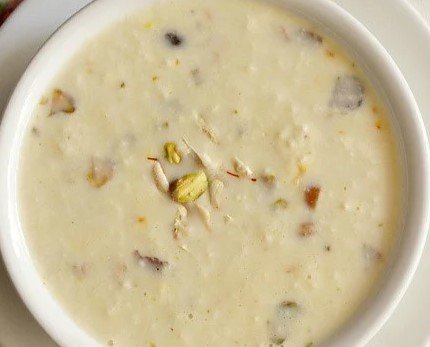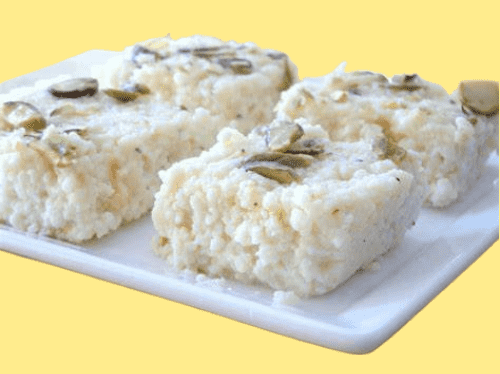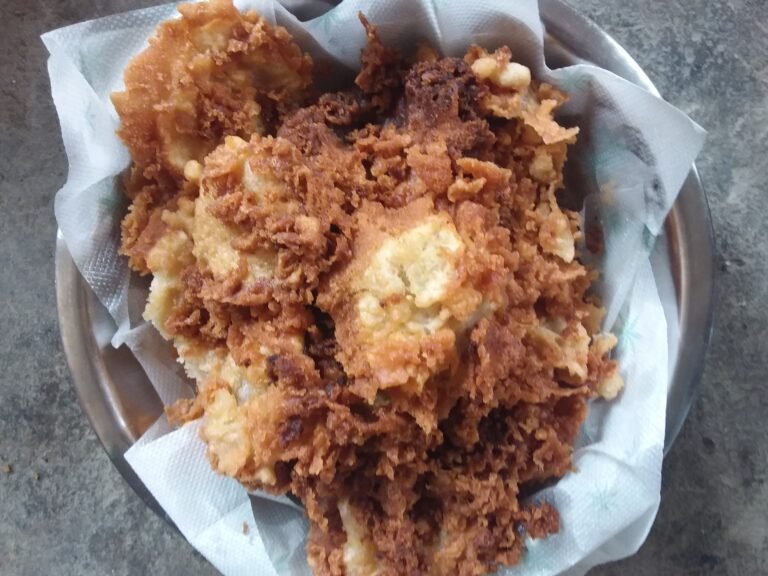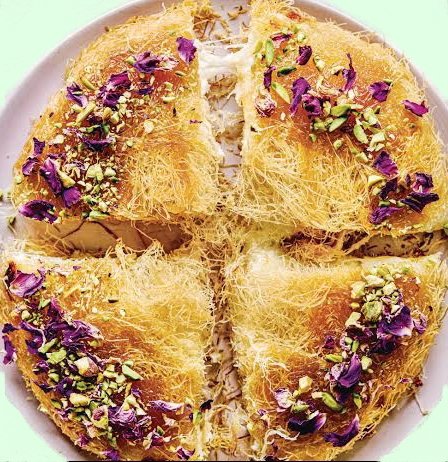Jalebi
Introduction to Jalebi
History and Cultural Significance of Jalebi:
Jalebi, also known as zulbia in some cultures, has a rich history that dates back to ancient India and the Middle East. It is a staple during festivals, celebrations, and special occasions across South Asia. The origins of jalebi can be traced to Persian and Indian influences, where it was enjoyed by royalty and common folk alike. Over centuries, the recipe has evolved, but its essence remains the same – a deep-fried sweet dipped in sugar syrup.
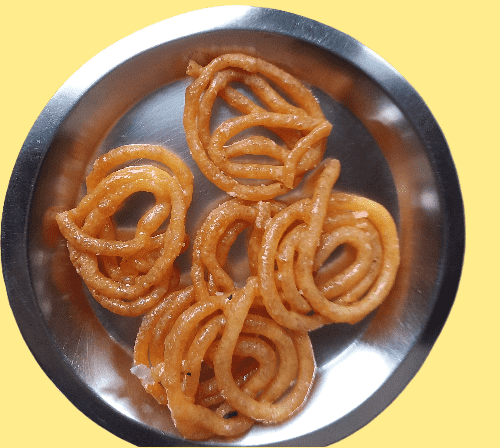
Health Benefits of Jalebi :
While jalebi is undeniably a treat best enjoyed in moderation, it does offer some benefits. The fermentation process of the batter can aid digestion, and the use of saffron and cardamom in the syrup can provide antioxidant properties. However, it’s important to remember that jalebi is a high-sugar, high-calorie dessert.
Essential Ingredients for Jalebi :
Creating perfect jalebi requires a few essential ingredients that can be easily found in most kitchens.
Batter Ingredients for Jalebi
- All-purpose Flour (Maida): The base of the batter, providing structure and crispiness.
- Yogurt: Aids in fermentation, giving the batter a slight tanginess.
- Baking Powder: Helps the batter rise and become airy.
- Water: To achieve the right consistency for the batter.
- Yellow Food Color (optional): For the characteristic bright yellow color.
Syrup Ingredients for Jalebi :
- Sugar: The main component of the syrup.
- Water: To dissolve the sugar.
- Lemon Juice: Prevents the syrup from crystallizing.
- Saffron (optional): Include a sumptuous flavor and color.
- Cardamom Powder: Enhances the aroma and flavor.
- Rose Water (optional): For a floral hint.
Tools and Equipment for Jalebi :
Having the right tools is crucial for making jalebi. Here’s what you’ll need:
- Mixing Bowls: For preparing the batter and syrup.
- Whisk or Hand Mixer: To mix the batter thoroughly.
- Crushed Bottle or Channeling Pack : For shaping the jalebis.
- Deep Frying Pan or Kadai: For frying the jalebis.
- Opened Spoon: For expelling the jalebis from the oil.
- Thermometer: To monitor the temperature of the oil and syrup.
- Tray or Plate: To cool the jalebis after frying.
Step-by-Step Recipe :
Preparing the Batter :
Gather Ingredients: Measure out 1 cup of all-purpose flour, 2 tablespoons of yogurt, 1/4 teaspoon of baking powder, and a pinch of yellow food color (if using).
Mix Dry Ingredients: In a mixing bowl, combine the flour, baking powder, and food color.
Include Yogurt and Water: Steadily include the yogurt and sufficient water to frame a smooth, thick batter.
The hitter ought to have a pouring consistency, comparable to hotcake player.
Whisk Well: Whisk the batter thoroughly to ensure there are no lumps. Cover the bowl and let it rest for at least 2 hours to allow the batter to ferment. For best results, ferment the batter overnight in a warm place.
Preparing the Syrup :
Gather Ingredients: Measure out 2 cups of sugar, 1 cup of water, 1 teaspoon of lemon juice, a few saffron strands (if using), 1/2 teaspoon of cardamom powder, and 1 teaspoon of rose water (if using).
Dissolve Sugar: In a saucepan, combine the sugar and water. Warm the blend over medium warm, blending persistenly until the sugar breakup.
Add Lemon Juice: Add the lemon juice to prevent crystallization.
Add Saffron and Cardamom: Mix in the saffron strands and cardamom powder. Continue to simmer until the syrup reaches a one-string consistency (when a drop of syrup between your thumb and forefinger forms a single thread). This usually takes about 10-15 minutes.
Add Rose Water: If using, add the rose water and mix well. Keep the syrup warm.
Frying the Jalebis :
Heat Oil: In a deep frying pan or kadai, heat oil over medium-high heat. The oil should be hot but not smoking (around 350°F or 175°C).
Fill Squeeze Bottle or Piping Bag: Pour the fermented batter into a squeeze bottle or piping bag fitted with a small round tip.
Shape Jalebis: Squeeze the batter into the hot oil in a spiral or pretzel shape, making small circles. Fry the jalebis until they are golden and crisp on both sides, about 2-3 minutes per side.
Drain Excess Oil: Using a slotted spoon, remove the jalebis from the oil and let the excess oil drain on a paper towel-lined plate.
Dip in Syrup: Immediately dip the hot jalebis into the warm sugar syrup. Let them soak for about 30 seconds, then remove and place on a tray to cool.
Variations and Substitutions of Jalebi :
Instant Jalebi: For a quicker version, use self-rising flour instead of fermenting the batter.
Fruit-Flavored Jalebi: Add fruit purees like mango or strawberry to the batter for a unique twist.
Healthier Jalebi: Use whole wheat flour instead of all-purpose flour, and substitute jaggery syrup for sugar syrup.
Vegan Jalebi: Replace yogurt with plant-based yogurt or omit it entirely and use a little lemon juice for fermentation.
Tips for Perfecting Jalebi :
Fermentation: Ensure the batter is well-fermented for the best texture and flavor. A warm place speeds up the fermentation process.
Consistency: The batter should be smooth and thick enough to hold its shape when piped but not too thick to clog the piping tip.
Oil Temperature: The oil should be hot enough to fry the jalebis quickly, but not so hot that they burn. Maintaining a steady temperature is key.
Syrup Consistency: Achieving the right syrup consistency is crucial. A one-string consistency ensures the jalebis are well-coated without being overly sticky.
Soaking Time: Don’t soak the jalebis in the syrup for too long, as they may become too soft. A quick dip is sufficient.
Serving Suggestions With Jalebi :
Traditional Style: Serve jalebis warm with a sprinkle of crushed pistachios or almonds.
With Rabri: Pair with creamy, thickened milk (rabri) for an indulgent dessert.
Festive Presentation: Serve on a decorative platter with edible silver leaf (varak) for special occasions.
Street Style: Enjoy with a side of hot milk or yogurt.
Storing and Reheating :
Storing: Store leftover jalebis in an airtight container at room temperature for up to 2 days. For longer storage, refrigerate them for up to a week.
Reheating: Reheat jalebis in the oven at 300°F (150°C) for 5-10 minutes to restore their crispiness. Avoid microwaving, as it can make them soggy.
Conclusion of Jalebi :
Making jalebi at home can be a delightful and rewarding experience. This comprehensive guide provides all the details you need to create perfect jalebis, from the batter preparation to the final soaking in syrup. With the right ingredients, tools, and techniques, you can enjoy this beloved Indian sweet treat anytime.
Final Thoughts on Jalebi :
Cooking jalebi is both an art and a science. The joy of creating these crispy, syrup-soaked spirals at home is unparalleled. Don’t be afraid to experiment with flavors and techniques to make the recipe your own. Share this sweet treat with family and friends, and enjoy the smiles it brings. Happy cooking!
